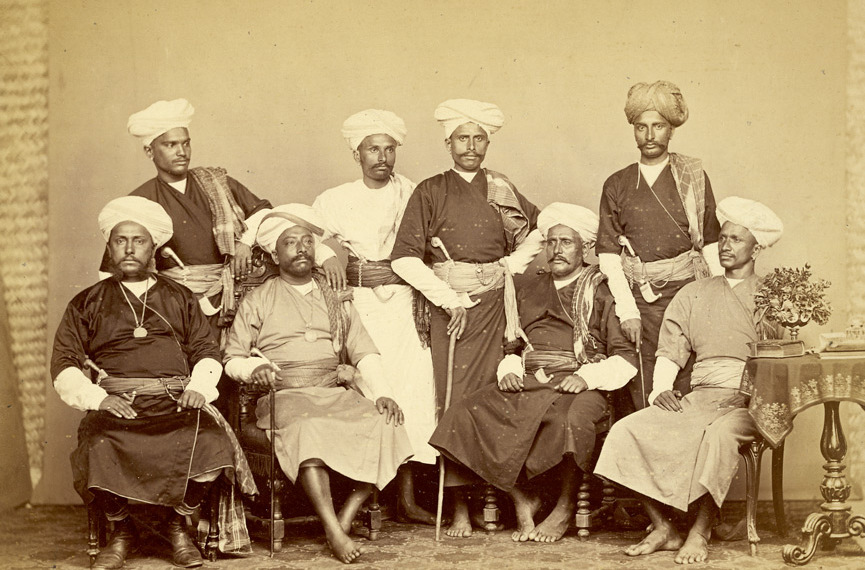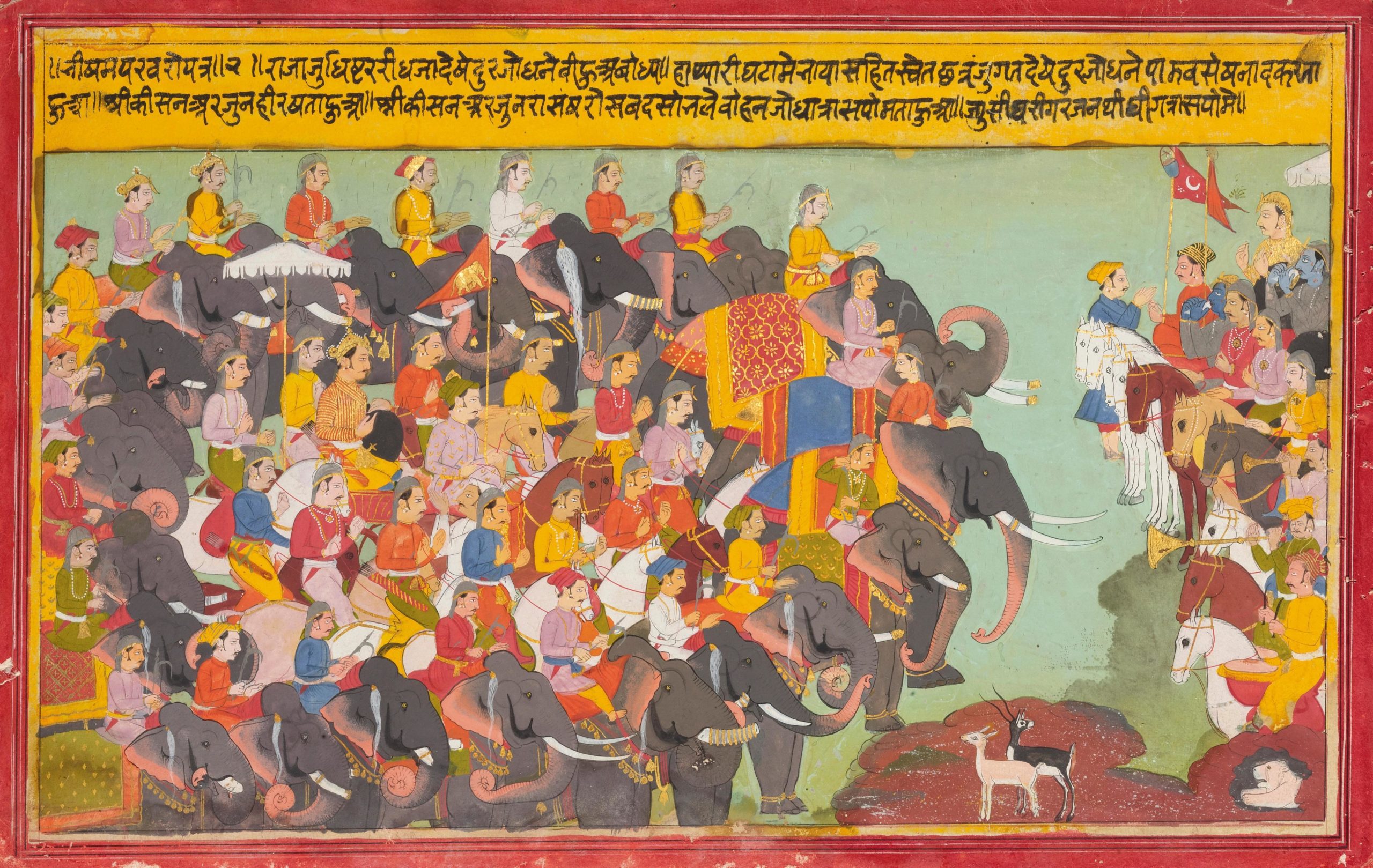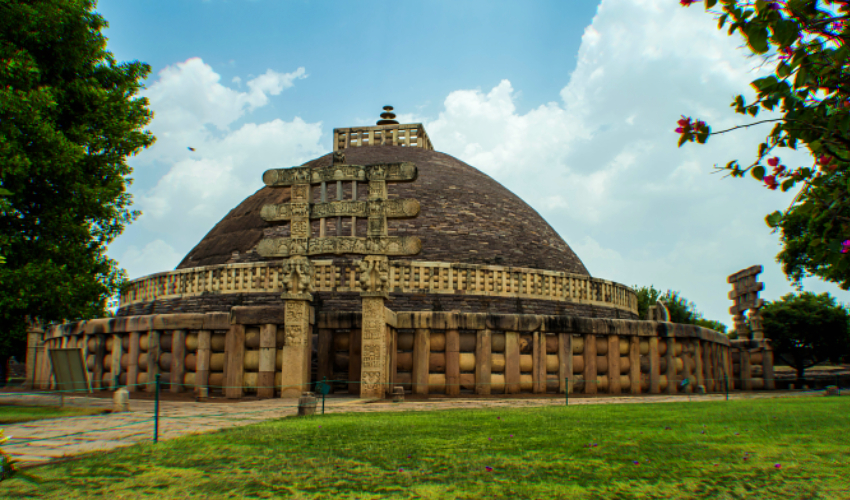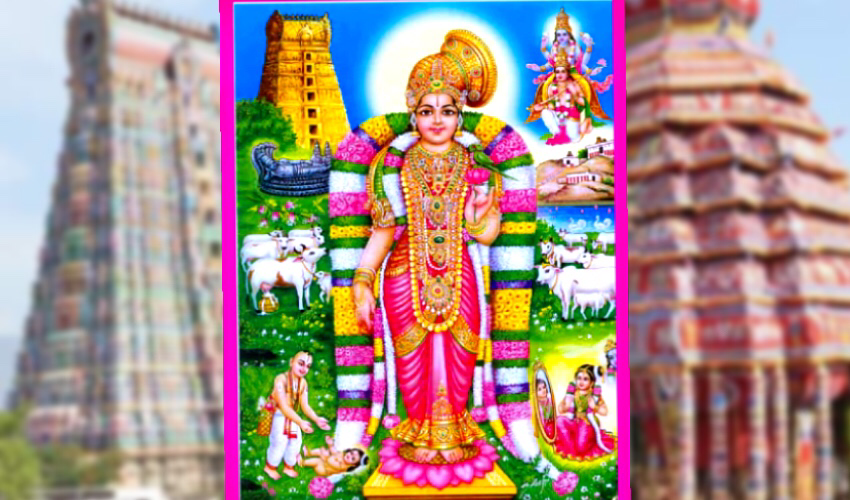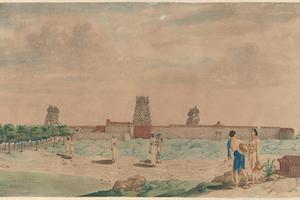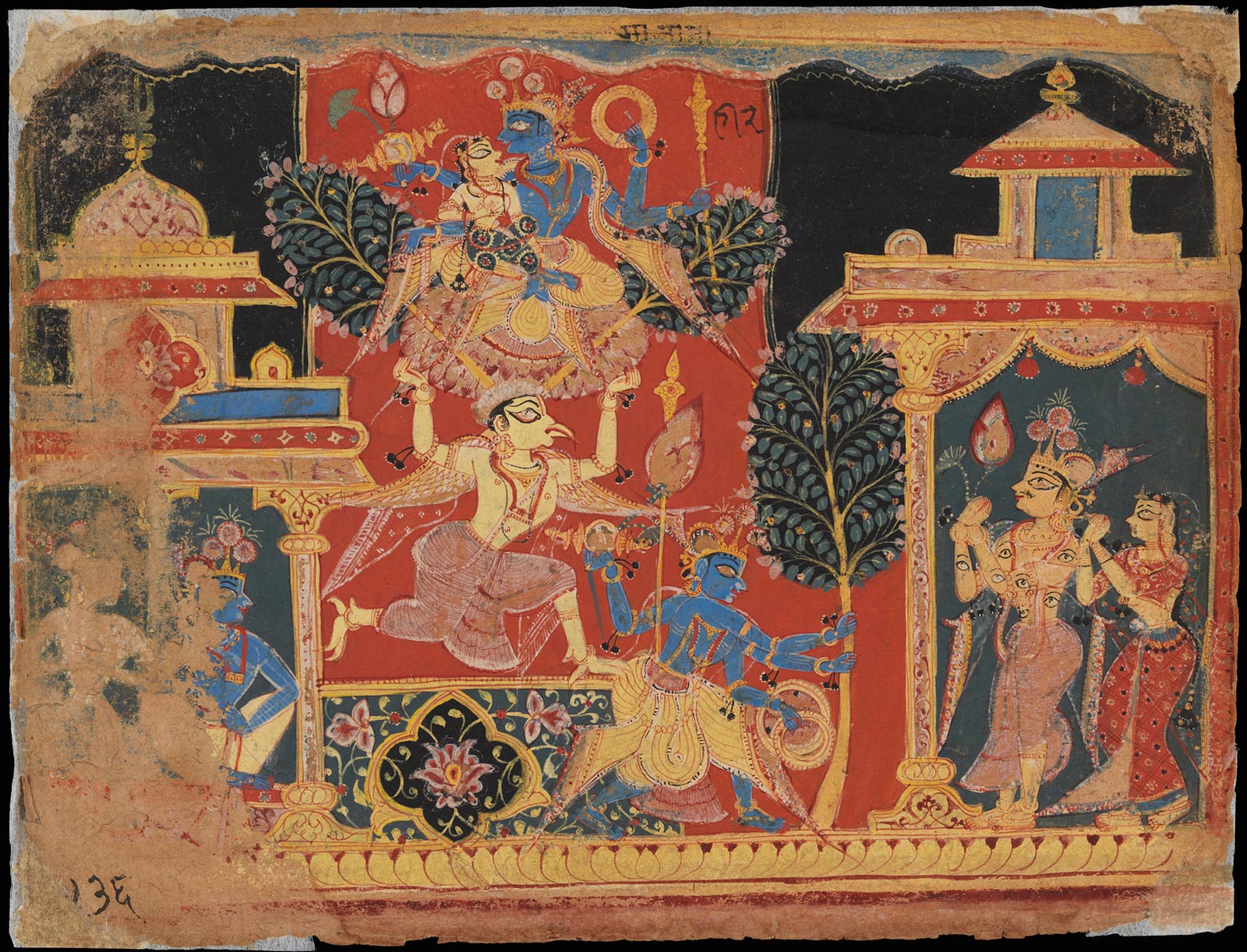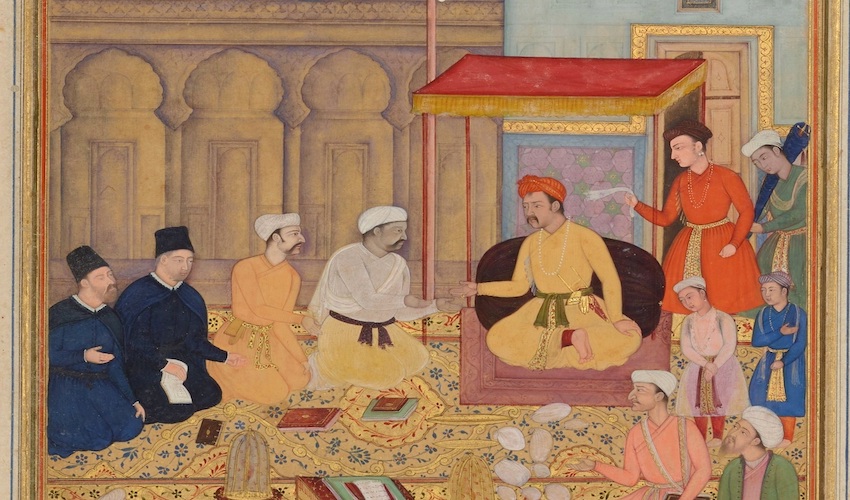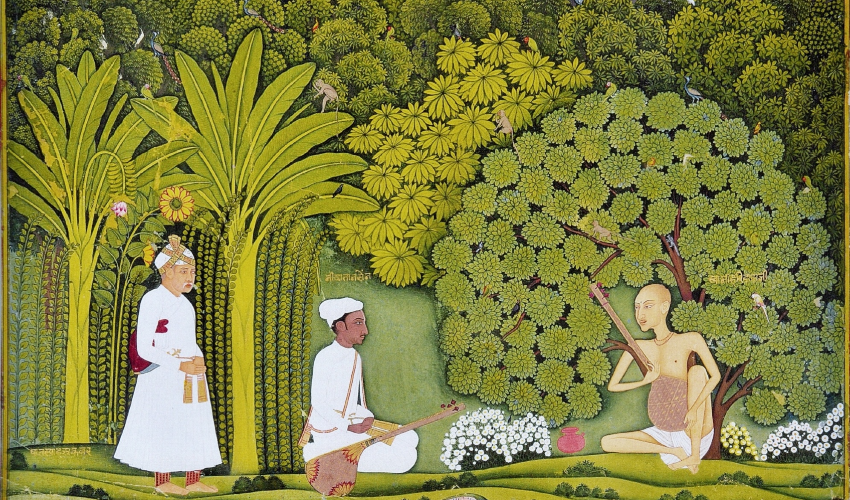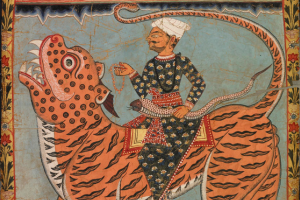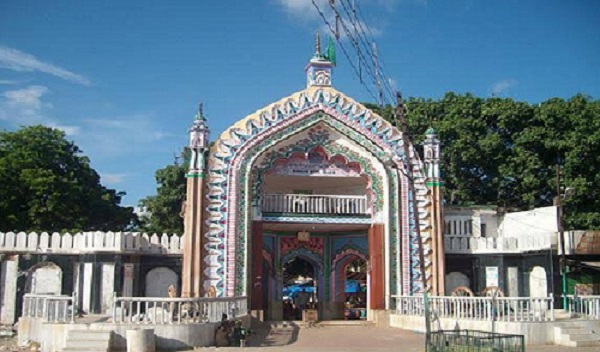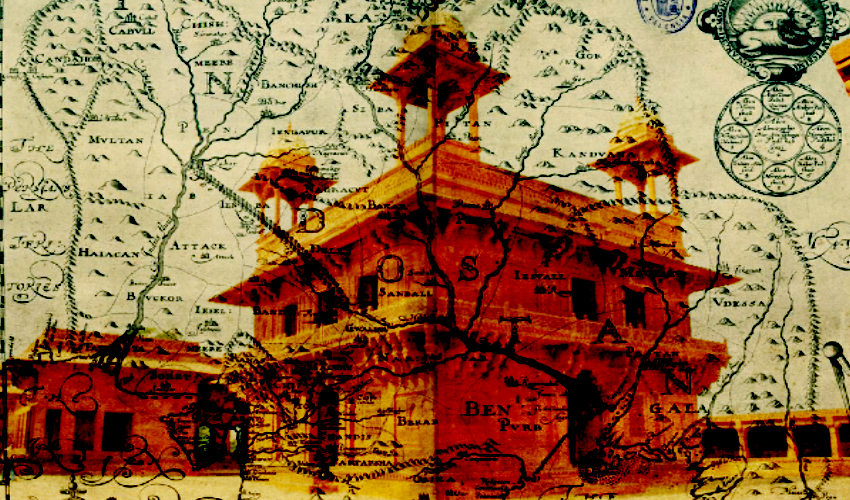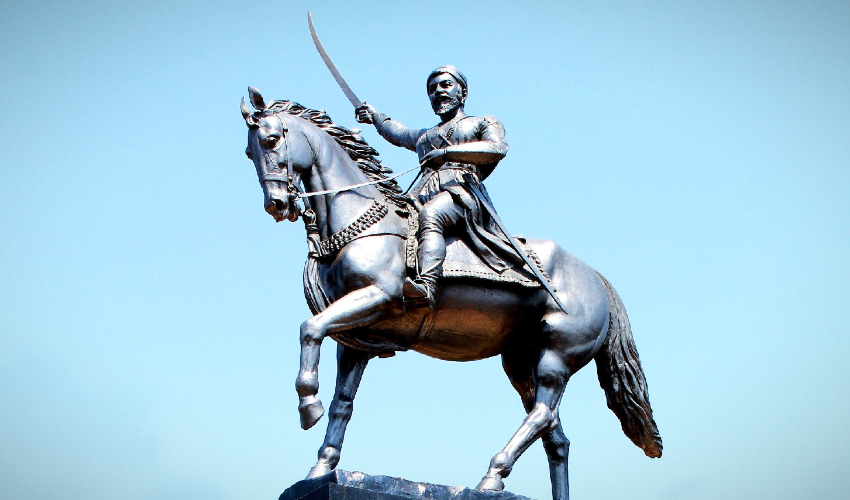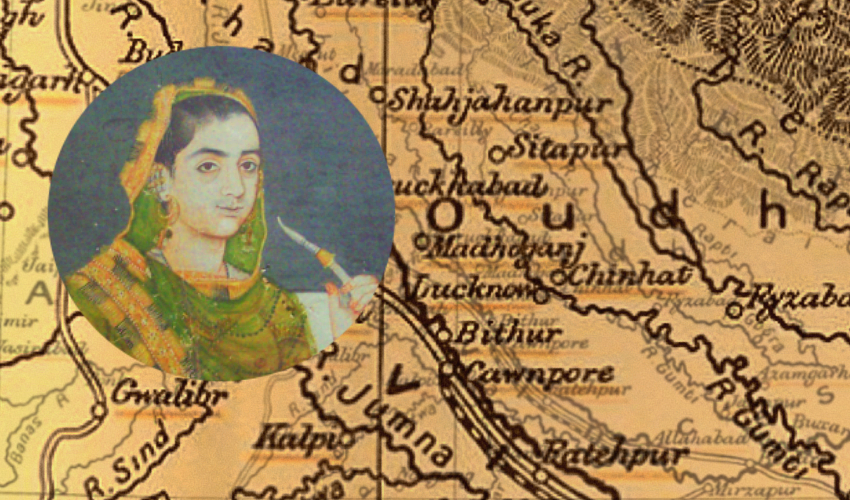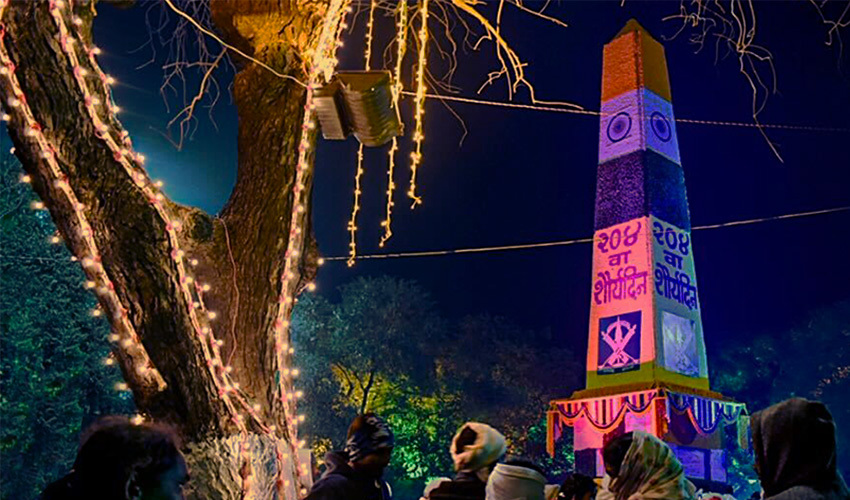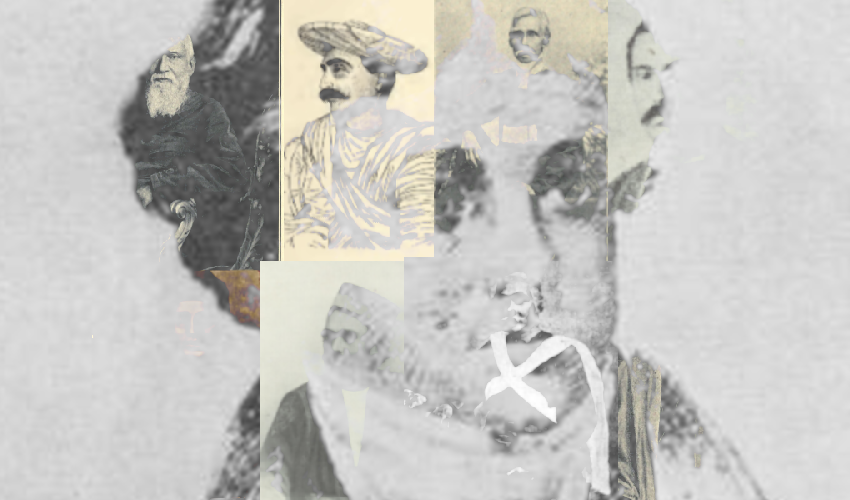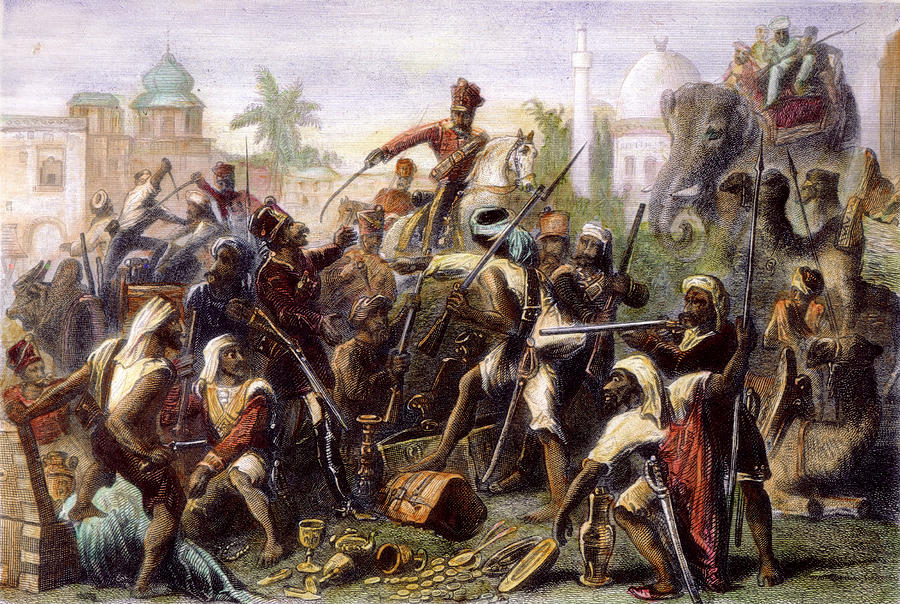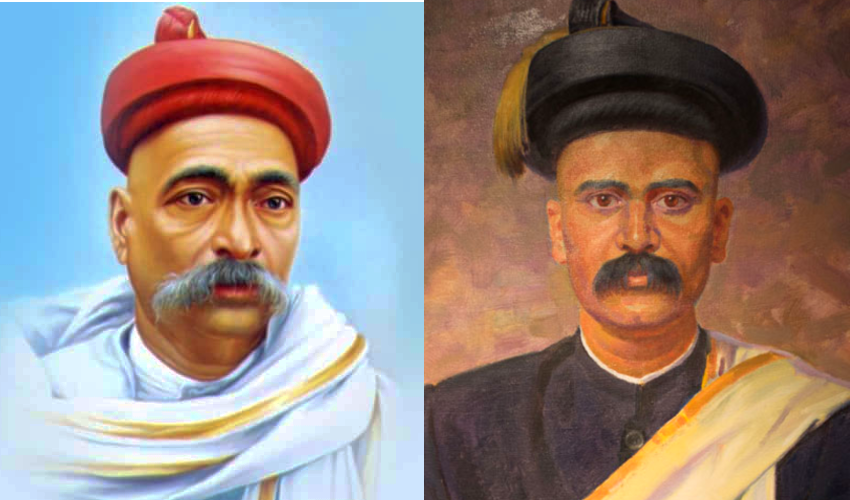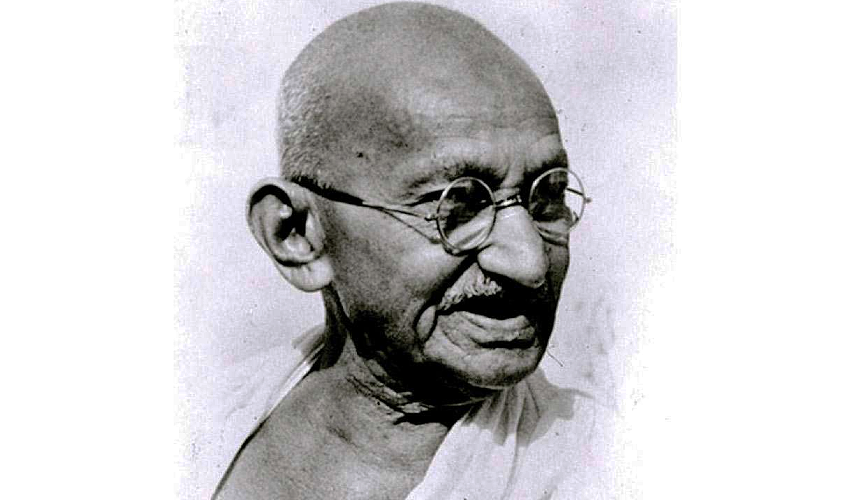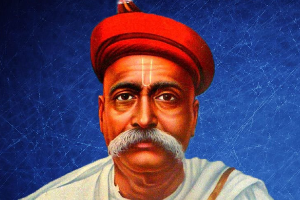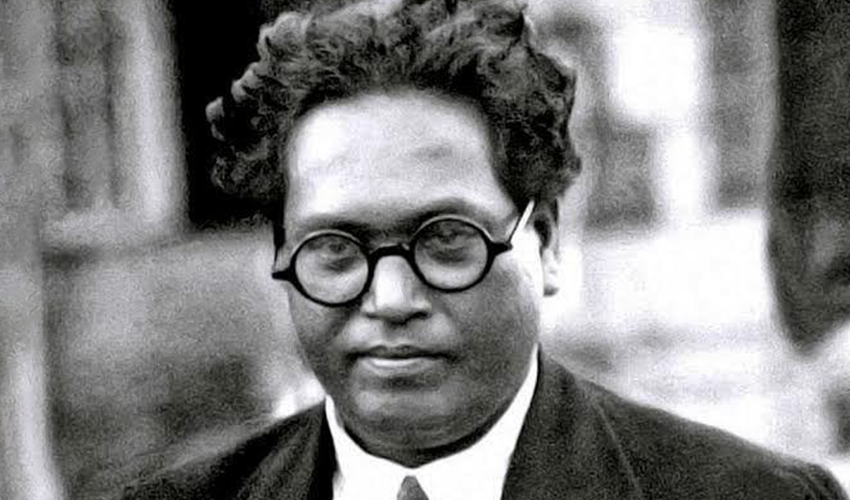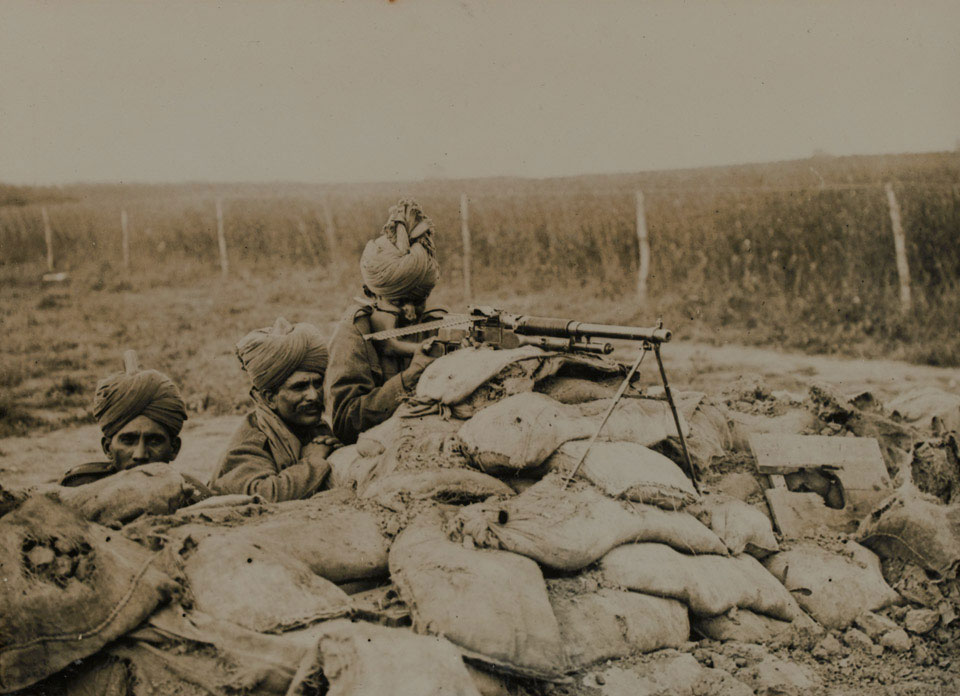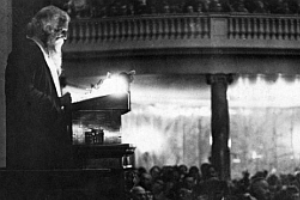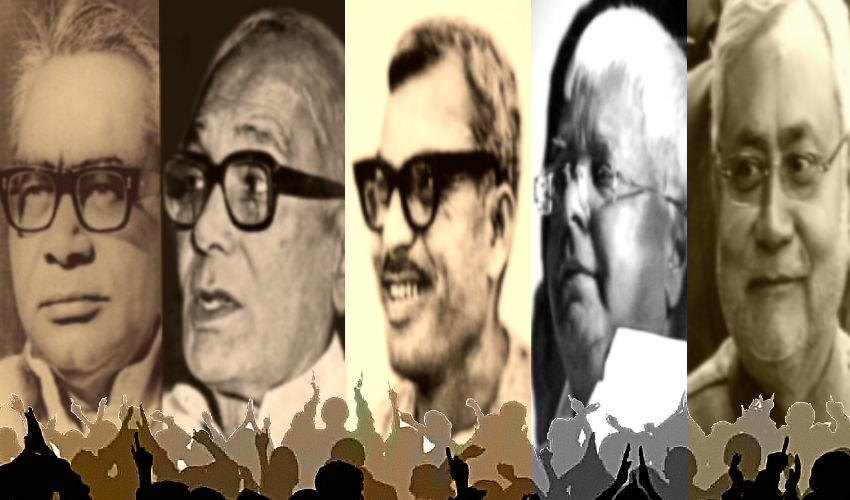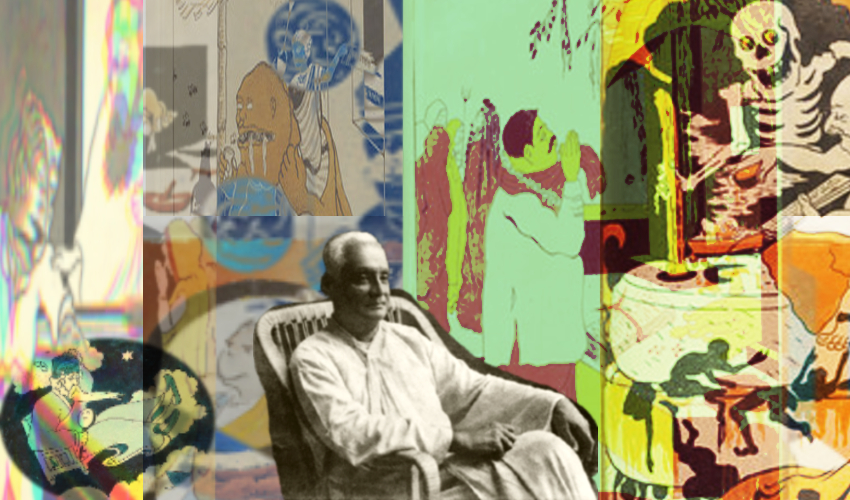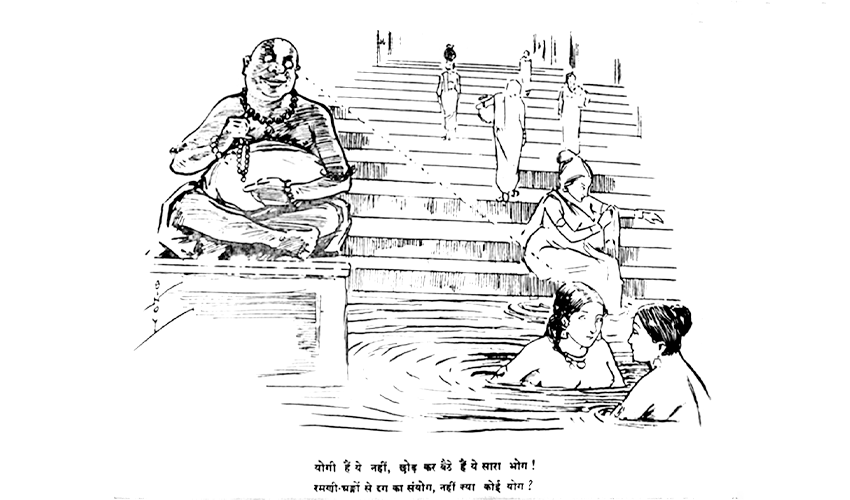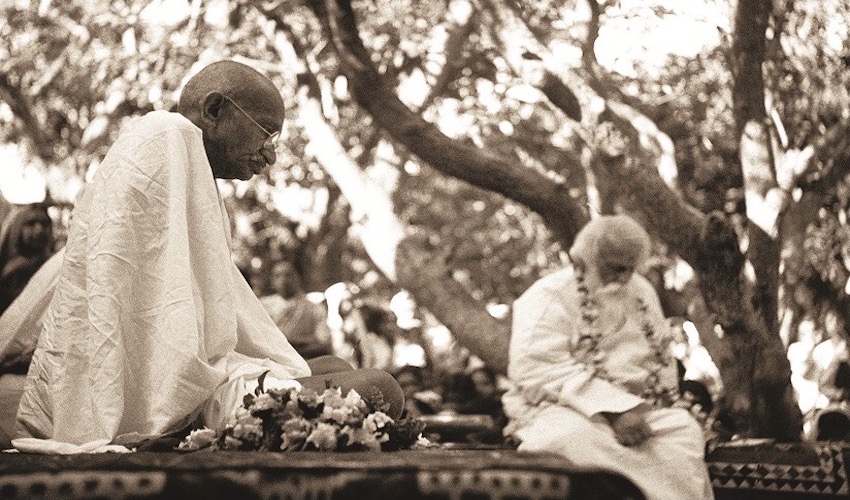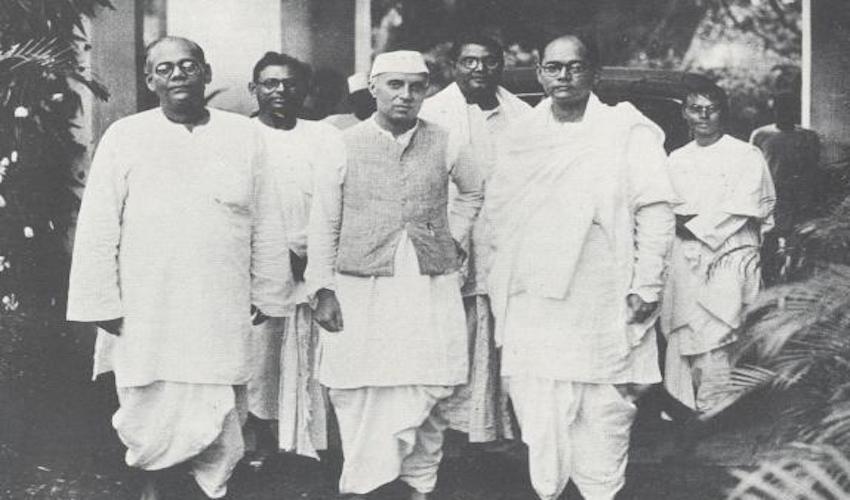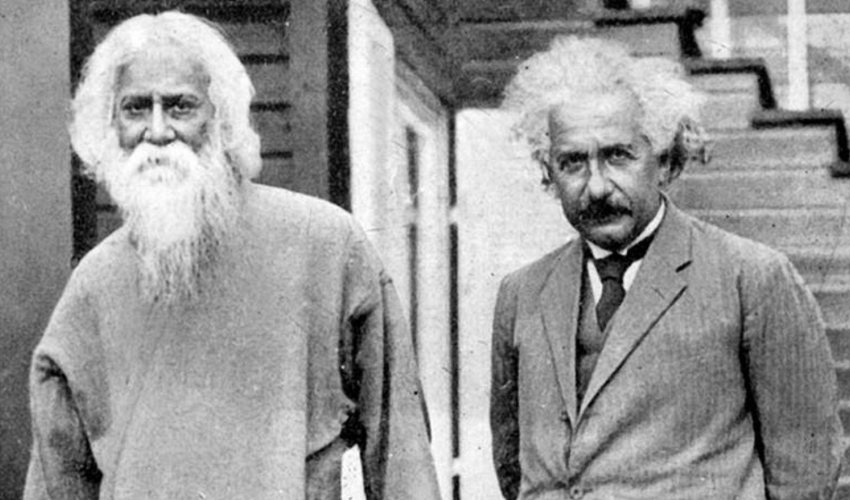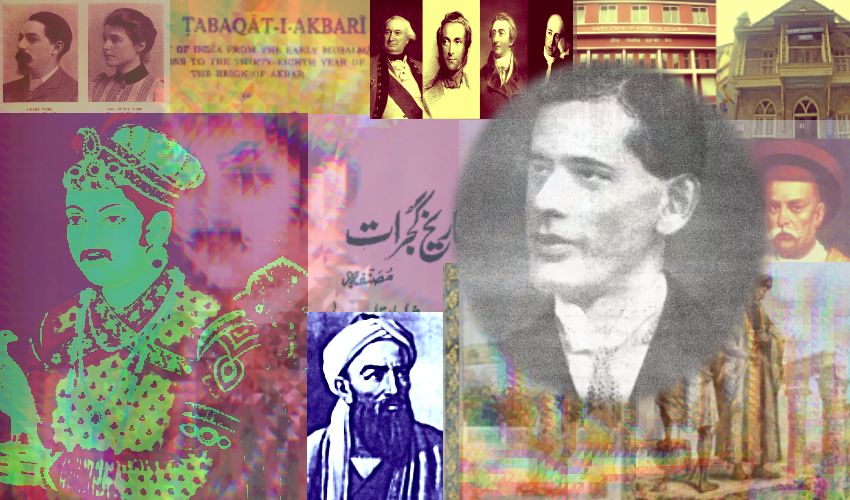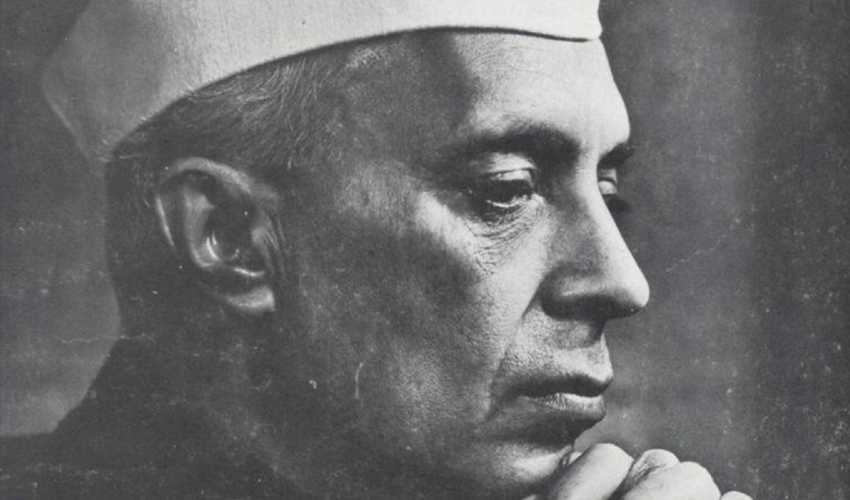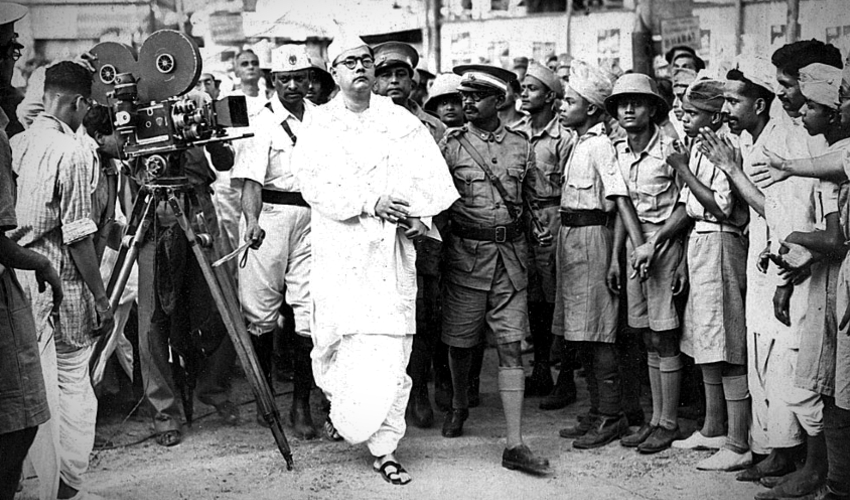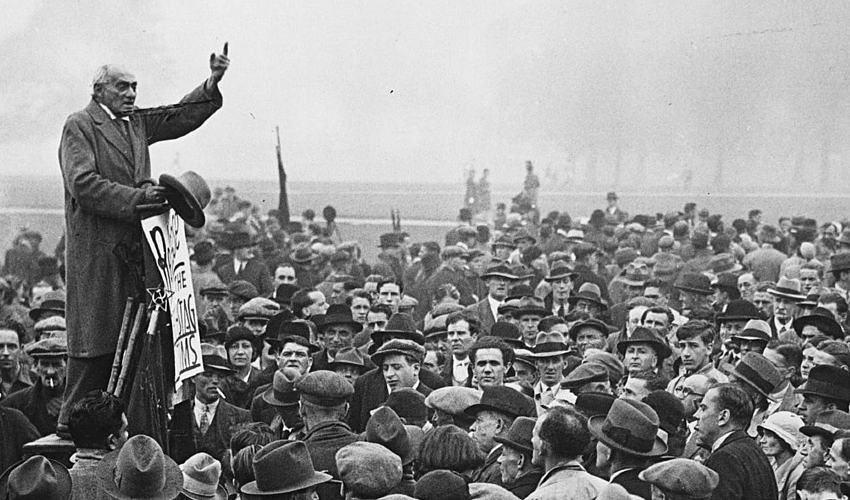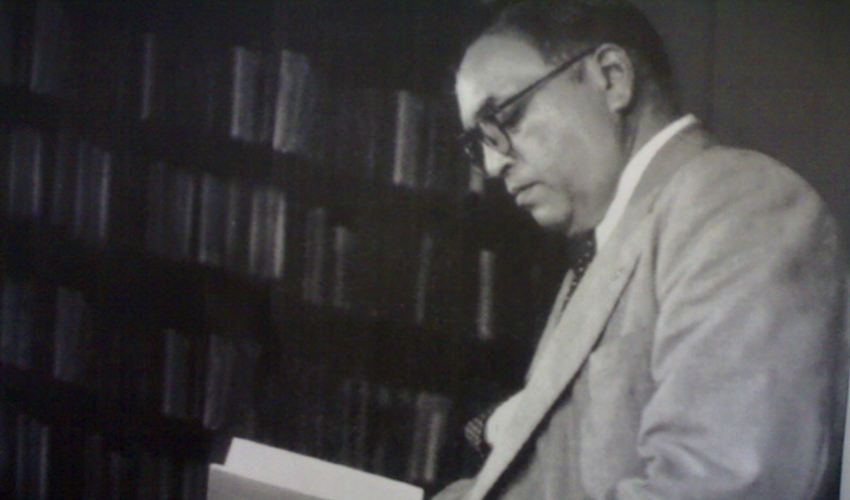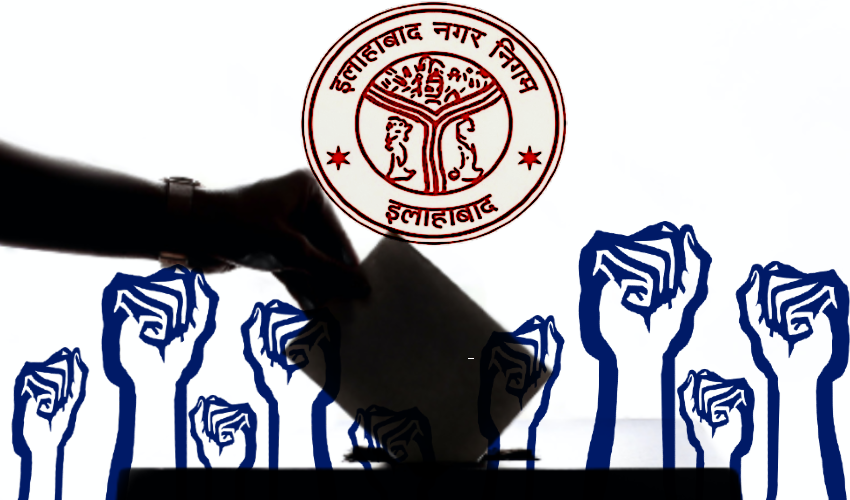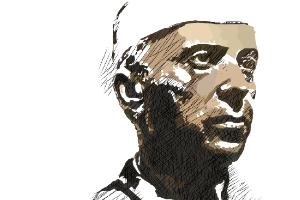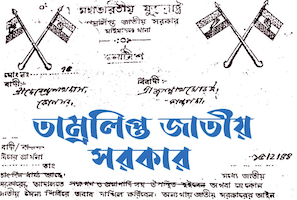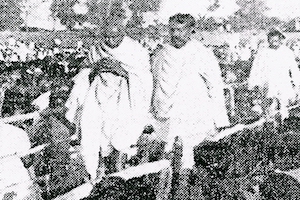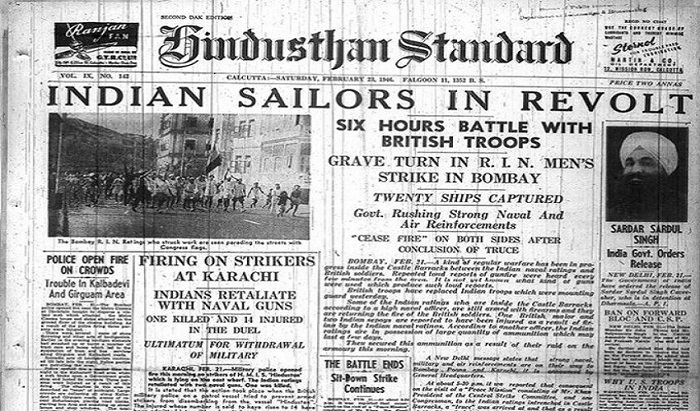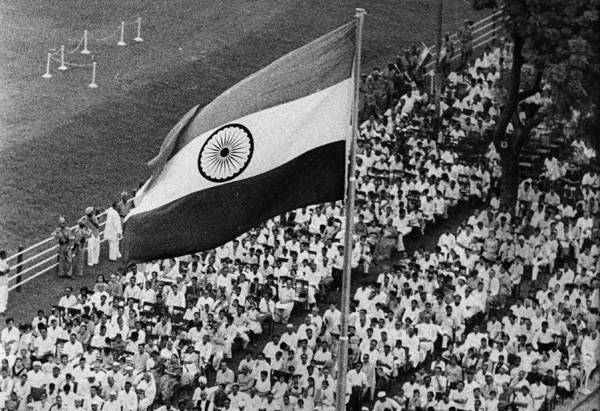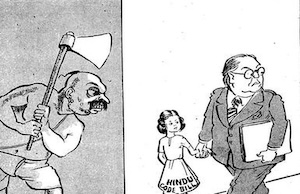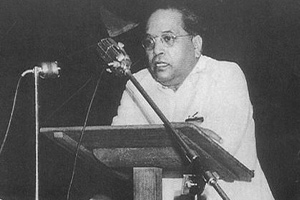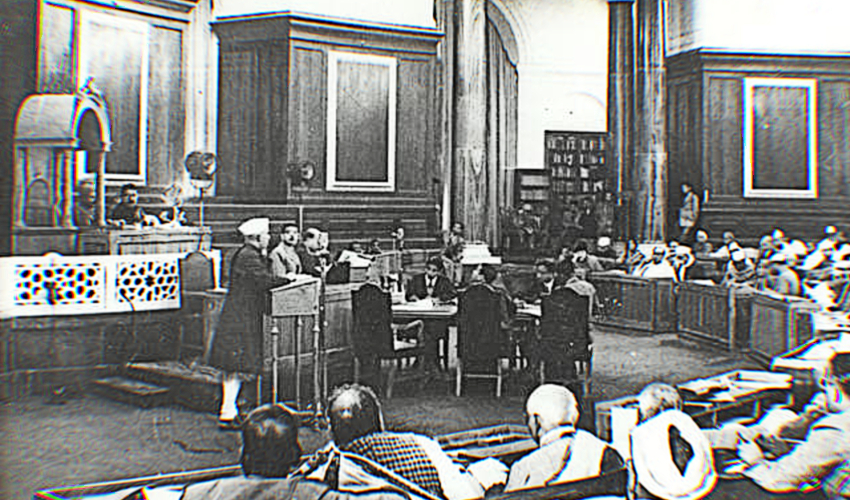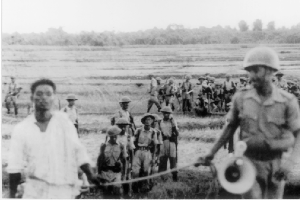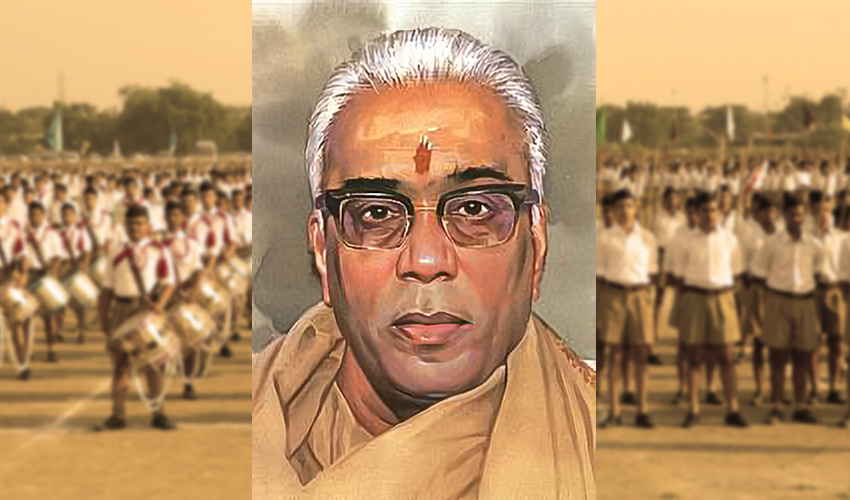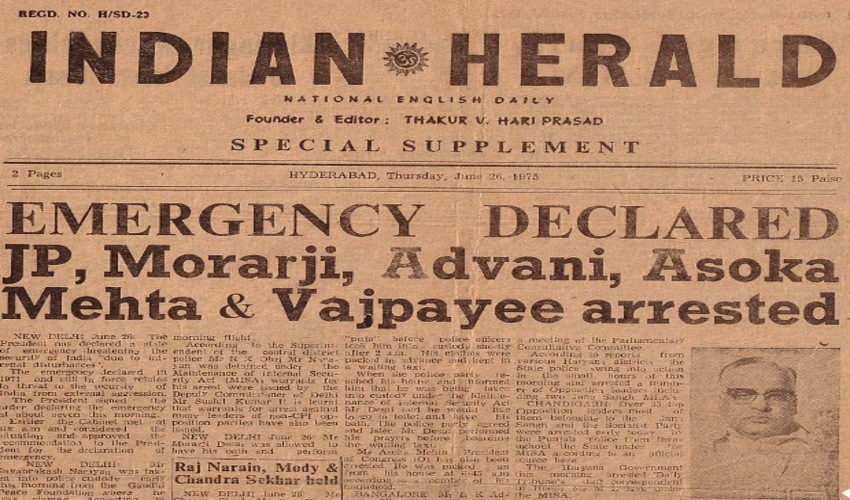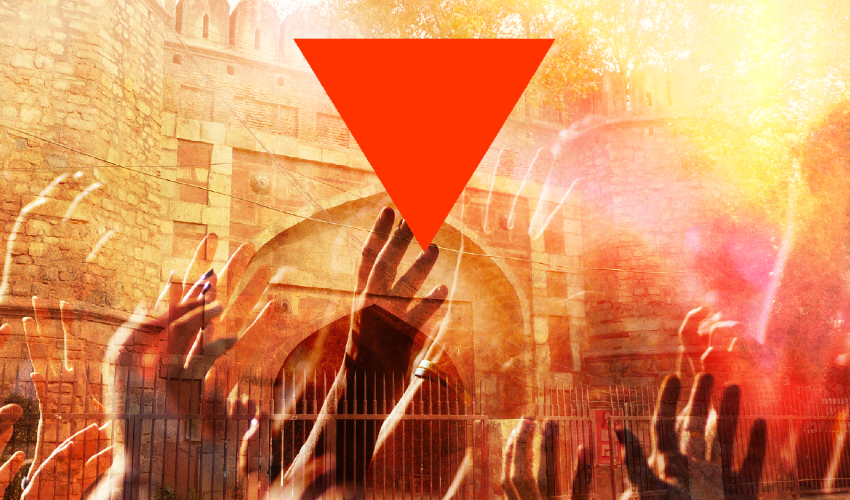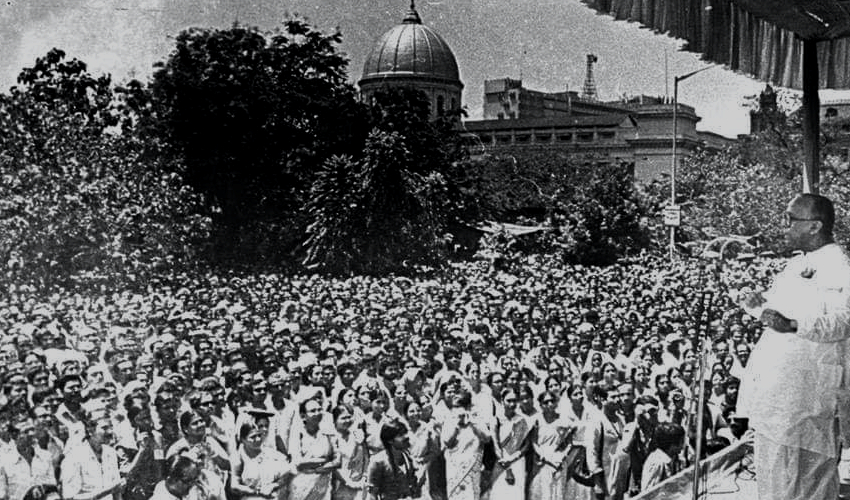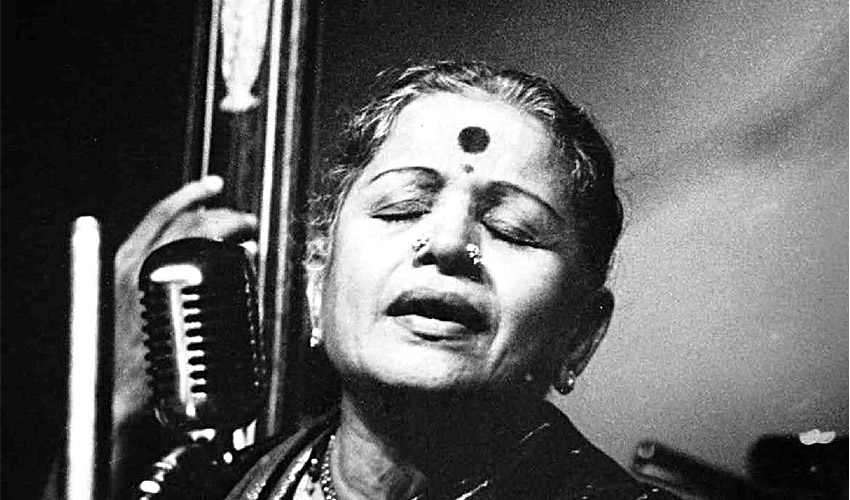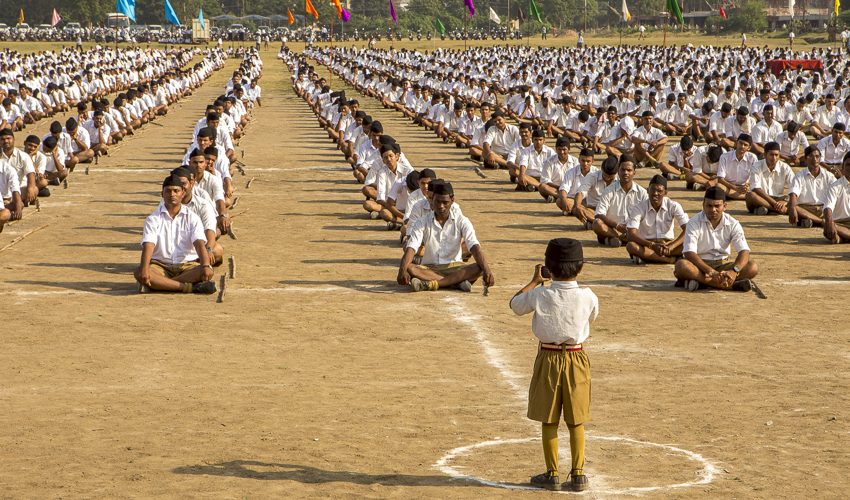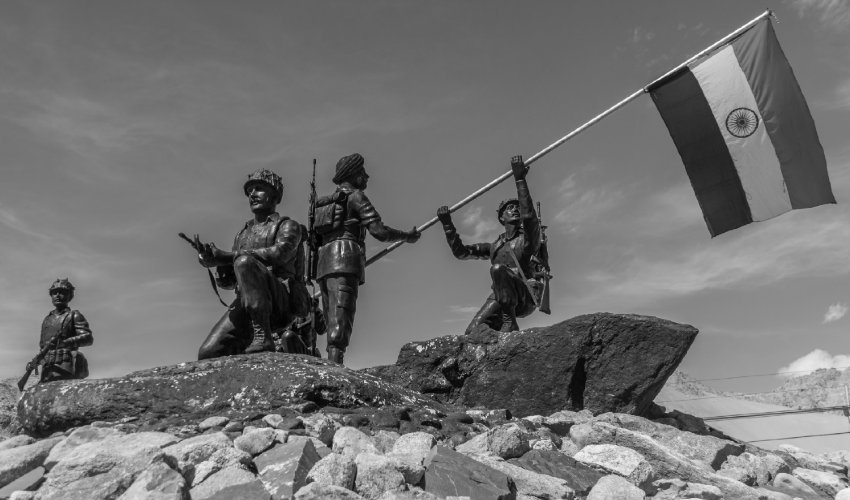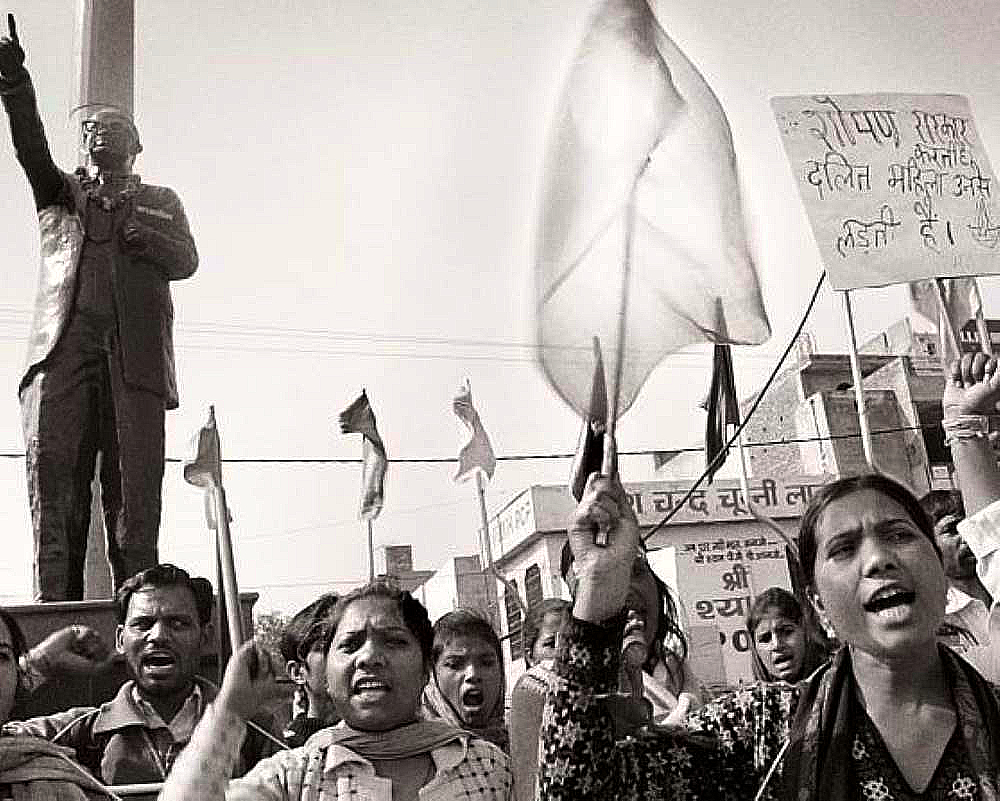ARCHIVE
Altars
There were two facets to the devotees’ exertions on behalf of Ghazi Miyan: pilgrimage to Bahraich or to a surrogate fair nearer home, and the worship of the Ghazi at domestic altars. The common appellation of Salar Masud’s devotees was Panchpiriya, that is, the followers of the quintet consisting of Ghazi Miyan and his four associates. ‘Panchpiriya’ was the country demotic for Panj Pir, the ‘five saints’ of Islam, especially Shia Islam: the Prophet; Fatima, his daughter; Ali, her husband; and their sons, Hasan and Husain, whose tragic death at the battle of Karbala is mourned widely across the Hindu–Muslim divide.
Late nineteenth-century accounts of north Indian religious life present a bewildering variety of ‘Panch Pirs’ or five personages worthy of devotion and propitiation.
In western Punjab, the quintet frequently consisted of the pedigreed Indian saints of Multan, Ucch, Pakpattan, Ajmer and Delhi. In eastern Punjab and the Gangetic corridor, the Panchpiriya was a demotic concatenation, led invariably by Ghazi Miyan, yet malleable enough to accommodate more generally the myriad ‘deified worthies propitiated by the lowest classes’.
The 1.7 million individuals who were recorded at the 1891 Census as belonging to the Panchpiriy a sect—almost entirely in the Gorakhpur and Banaras divisions of eastern UP—did not have a uniform set of Five Worthies. That year’s census reported Ghazi Miyan, Buhana Pir, Palihar, Amina Sati and Hathile in that order of popularity. These were some of the principal characters from the Ghazi Miyan lore: Hathile the Adamant who helps attack idols in Banaras; the virtuous Amina Sati, banished for feeding a Turkic brother; and Buhana, or Birahana the naked, a marijuanated bodyguard of Masud, in whose lap the warrior saint breathed his last on that first Sunday of June in 1034 .

Ghazi Miyan’s shrine. Credits: Maharajatrails.com
In the villages of eastern UP, the term ‘Panchpiriya’ encompassed equally godlings, worthies and local Muslim saints. Ghazi Miyan and the upright Amina Sati figured in most such groupings, but with curious anomalies. Among the caste of Kahar-palanquin bearers, the ferocious Amina Bhavani was ‘the most venerated’ of their Panchon Pirs—a bloody mother goddess who, uncharacteristically for a Panchpiriya godling, received ‘libations of wine and a young pig’ as offerings. The potters of Basti who worshipped Panchon Pir alongside a clutch of local godlings and forest deities were careful not to offer pigs to these Muslim godlings—‘Musalmani deotār’ as the Panchpiriyas were called generically. Muslim devotees of the Ghazi also shared their Five Pirs with sundry local deified beings, mother goddesses, guardian deities, and disease-causing and repelling worthies. Musalman bangle sellers and armourers propitiated the Hindu goddesses of destruction. Similarly, darzi-tailors and Ghosi herdsmen, ardentworshippers of Ghazi Miyan, retained ‘like many other lower Muhammadan tribes, some Hindu belief and practices’.
The archetypal Panchpiriya follower was a low-caste Hindu, usually from the eastern Banaras-Gorakhpur region. ‘A panchpiriya is a Hindu who worships Musalman saints’—Ghazi Miyan, Hathila, Parihar, Sahja Mai, and Ajab Salar—noted an authoritative compendium on Bihar Peasant Life.
The 1911 Census of UP put the ‘total population of the Hindu castes who worship[ped] these five saints’ at 13.5 million, laying stress on the fact that ‘of the 53 castes devoted to the Panchpiriyas in the province, 44 were ‘wholly or partly Hindus.’7 That was for the province as a whole.
Forty years earlier in 1873 at the Bahraich Fair, ‘the proportion of Mahomedans … was … [found to be] less than the Hindoos’.
The Muslim devotees were largely weavers, cotton carders, butchers and Jats—low-bred razla as these were characterised in a major historical work of early nineteenth century. As for the Hindus, Koris, Kurmi and Ahir peasants and cowherds were the largest groups among the 105,306 pilgrims who entered the shrine on Sunday, 18 May 1873.

A picture from the Ghazi Miyan fair. Credits: livehindustan.com
We know the exact number as entry to the fair that year to was regulated by district officials by the sale of 1 paisa tickets. Local officials were emphatic that it were the Hindu menu peuple (nānh jāt in the local dialect) who were the pukka or ‘real’ devotees of the Miyan. These non-Muslim lower castes appeared ‘to have more belief in Syud Salar than the rest’; they came into the shrine ‘leaping and jumping with the flag bearer[s]’ and made the most offerings of flags, chadars and cash at the Bahraich shrine. Akbar Ali, a junior functionary stationed at the fair in 1873, identified them as ‘the people of the East’—the purabiyas from Gorakhpur-Banaras—‘who came only wearing a “Dhoti”’.
The translation from the Urdu is jarring, but the awkward sartorial image of the true devotee is intriguing and requires some unpacking. Clearly, these pilgrims—members of the Ghazi’s ‘marriage parties’ as they perceived themselves—did not march bare-chested in the scorching heat of May all the way from their villages ‘only wearing a long dhoti’ tied at the waist. Something has been lost in the translation, for it was customary both for the groom and for male members of a marriage party to wear yellow dhotis, dyed traditionally with turmeric or safflower. The curious allusion to the Hindu devotees’ attire, it seems, is a pointer rather to their coloured dhotis, for the same officer set them apart from the ‘white clothes wearing … people of Bahraich who had gone’ to the shrine ‘for the purpose of witnessing the fair’, and who ‘seldom went inside to offer anything’.
Now the dyeing of dhotis was not the norm in eastern UP and Bihar. Mārkīn, that is, mill-made cloth with the distinguishing ‘mark’ of English or Indian mills, was the cloth most used for dhotis, and it was usually white. Where white was customary, the dyeing of cloth had a special significance attached to it. Dhotis are still dyed primarily for marriages and other special occasions, ritual and social—even political. When in 1922, peasants in the Gorakhpur district of eastern UP consciously donned the mantle of Congress volunteers as part of Gandhi’s ‘army’ of non-cooperators, they marched wearing yellow-dyed dhotis. Piyari, or the coloured dhotis worn by males of a groom’s party, were clearly in evidence at Bahraich that summer of 1873—an extension to the fair of a ritual practice followed more routinely at home. Indeed, the Panchon Pir or ‘Heroes Five’, when propitiated at domestic altars, received the special presents due to a groom: the characteristic maur head dress, the full-length dhoti, or the smaller ‘langot’ which grooms put on for a full body massage. The offering of the yellow dhoti or smaller langot was also the norm with two other groom-godlings: Hardiha Lala and the eponymous Dulha Deo.
Hardiha Lala or Hardaul was the ‘great cholera godling’ of north India, propitiated during an epidemic with the sacrifice of ‘goats, fowls and suckers.’ However, among the potters, Hardaul had become ‘a household godling’, worshipped with the cooked food and condiments associated with marriage rituals. And this groom-godling was offered ‘a pair of loin-cloths (dhoti) dyed with turmeric’.
In central India, Hardaul, if propitiated, ensured that weddings took place as scheduled, unmarred by rain or storm. At the slightest sign of a brewing storm, a prayer was offered in praise of the hero. The trope of a storm disrupting marriage is also central to the Ghazi Miyan pilgrimage: an early nineteenth-century poetic description of the festivals of north India alluded to the popular belief that the storm is caused every year by an ogre trying to sweep the fairground clean. For the pilgrims constituting the Ghazi’s marriage party, it is a dust storm that disrupts his marriage at Bahraich on a yearly basis.
The preeminent groom-godling of the tribal communities of the plateau of the Son in Mirzapur and central India was Dulha Deo. In several variants, the groom is killed by lightening or turned to stone on his way to the bride. During the marriage season he was worshipped in the family’s kitchen, and ‘at weddings oil and turmeric [were] offered to him’19—as these are routinely rubbed on the groom’s body in all marriages, including the fateful one of Ghazi Miyan in the month of Jeth in 1034 CE.
It is these intriguing parallels that appear to make Dulha Deo and Ghazi Miyan so alike—both ‘of the class of divine youths, snatched away from life at the height of their strength and beauty’, as a nineteenth-century ethnographer put it. Killed by a tiger before the consummation of his marriage in one variant, for some scholars Dulha Deo was perhaps ‘absorbed into the Ghazi Miyan corpus … to facilitate … the adoption of the [warrior saint] cult by the non- Muslims’ of north India.
Whether parallels suggest that key structural elements of one, presumably prior cult are consciously grafted on to a subsequent cult remains an open question. In any event, merely seeking structural parallels subtracts from the particular inversion of marriage/death embedded in the Ghazi Miyan story.
The poignancy of the Ghazi-Groom story lies crucially in the unraveling of the lines of fate: a mother forewarned of the death of her (long-desired) son at his marriage, yet persisting with the celebrations. It is this tragic figure of mother Mamula straining at the wheel of fortune and failing to turn it around that makes the Ghazi saga more than a death of a bridegroom story. That destiny intervenes, not as the bland binary of victory and death in battle, but as a righteous call to ‘save the cows’, imbues a social dimension to the relatively straightforward tragedy of a groom’s death, foreclosing the possibility of consummation and procreation.
And crucially for history, it is not the transposition of a prior groom-godling on to the figure of Ghazi Miyan, but the obeisance paid to a Turkic warrior saint by a representative swath of Hindu society over several centuries, that propels continually the afterlife of Salar Masud as a hero located in an identifiable conflictual past of the early eleventh century—the time of seventeen incursions into northern India by purported uncle Sultan Mahmud of Ghazni.
That the tensility of the Ghazi Miyan cult may have inhered in a layered memorialisation of medieval Turkish conquerors bewildered the late nineteenth-century British officer-ethnographers. The writer of the 1891 Census Report, which recorded over 1.5 million ‘special worshippers of Panchon Pir’ in UP, faced some difficulty explaining the origin and development of the cult. It was the sheer incredibility, matched by numbers ‘of the adoption into the Hindu system as …beneficient … divinities … those men who were most instrumental in the subjection of Hindus to an alien rule’ that puzzled the Census Commissioner.
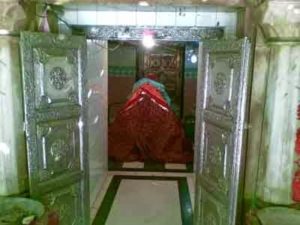
The grave of Ghazi Miyan. Credits: scroll.in
For the data were unequivocal that ‘even the Brahman makes his daily offerings of food and water to the spirits of the great [Ghazi] Pir and his associates, and for the low caste man the household worship of the five Pirs is in many districts his sole religious trust’. Officer D. C. Bailee ventured that the cult ‘probably spread through its early adoption by low caste converts [to Islam] who … found their gods … [whom] they had abandoned … in the dead heroes, whom genuine Muhammadans reverenced [sic] as martyrs who had fallen on behalf of their faith’. Unable to quite explain the wide appeal of the cult, Bailee asked his readers to imagine a sequence by which ‘the worship of the low caste Muhammadans at shrines dotted all over the country and known by all extended to the low caste and then to all Hindus’.
One additional feature added to the puzzlement of the English officer: ‘the Muhammdan origin of the worship even when adopted into the households of Hindus is never forgotten’.
It is Muslim Dafalis and servitors of the shrine who benefit from this conundrum of Hindu religiosity, concluded this official notice on the Ghazi Miyan phenomenon—a theme picked up in subsequent decades by publicists out to wean ‘innocent Hindu peasants’ from the clutches of charlatan Dafalis.
Late nineteenth-century notices marvelled at the amazing crossreligious hold of the Ghazi cult even among the most unlikely of communities. It was reported that while thieving in the great fairs of north India, the nefarious Bawarias scrupulously abstained from plundering the tomb and the fair of Ghazi Miyan. Instead, they went annually as pilgrims, and offered their own lahbar (flag) to the Bahraich shrine. There seems to be no reason to believe that this was a new development. Another such ‘criminal caste’, the Barwars, laid aside 1 per cent of their pickings from other fairs while propitiating the Panchpiriya, their ‘tutelary god’, in an elaborate domestic ritual:
“Each Barwar family keeps a small altar in honour of this tutelary god in his house, in the shape of a tomb, at which in the month of Bhadon (August) of every year, on the third or the fifth day of the first half of the month, he sacrifices a domestic fowl and bakes thin loaves of bread called “lugra”, and then gives both the bread and the meat of the sacrificed fowl, together with cooked dāl of gram [chane ki dāl], to a Musalman beggar [Dafali?], who goes about from house to house beating on a kettle-drum.”
That was in the 1880s.
In the Mewat region of villages near Delhi, Dafalis on the day of his martyrdom carried a procession of the Ghazi’s flag, singing in his honour and begging through the main village site and its satellite settlements.
At the other end of the sprawling province of UP, an ethnographic study of an eastern UP village suggests that well into the 1940s, each household of the caste of Teli oil pressers similarly had a clay altar in its house dedicated to Ghazi Miyan.
Every year on return from the Bahraich pilgrimage, householders would offer a big feast (kandūri): goats were sacrificed to the saint and money gifted to the Dafali. At the key domestic puja, the Dafalis were treated like Brahmans: the Teli householders washing their feet, and sprinkling this water inside their houses. The Dafalis would then sing and drum, in an effort to induce Ghazi Miyan to possess one member of the family. In Senapur (the village studied by Cornell University anthropologists in early 1950s), all Teli oil pressers, Kalwar distillers and ‘a majority of clean shudra and untouchable population as well, worshipped Ghazi Miyan as a family god’
By 1953, the ‘ethnographic present’ of the anthropologist Jack Planalp, the cult of Ghazi Miyan had suffered a decline in Senapur. Only two Nonia makers of saltpeter, earth-diggers, households and a few untouchable Chamar leather tanners and more generally agricultural labourers’ families worshipped the Ghazi in the early 1950s, and that too as an individual deity rather than as a ‘family god’. The dominant Thakur landlords of the village had succeeded in enforcing a ban on the public display of the Ghazi’s flag. Dafalis were now restricted to taking out their procession in the segregated untouchable Chamar quarters, away from the main village site. Even then, women of all castes continued to ascribe misfortunes in the family to the dereliction of the Ghazi’s worship. Oil presser Telis seem to have retained their close association with Ghazi Miyan. To this day, a miniature nuptial cot is taken out annually to Bahraich from the house of a Rudauli Teli in celebration of that marriage that death had stymied in the summer of 1034 CE! Nor has the Bahraich Fair been reduced to a solely Muslim affair.
This excerpt has been carried with the permission of Shahid Amin, author of ‘Conquest and Community: The afterlife of Warrior Saint Ghazi Miyan’. You can buy the book here.

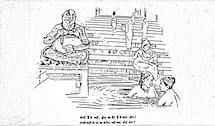
In the colonial period, the threat of the lecherous male gaze was used by the new patriarchy to restrict access to employment and public space for women, maintaining a patriarchal division of labour. Read how this process unfolded in our newest excerpt.
Saurav Kumar Rai
__

Was Lala Lajpat Rai's Hindu nationalism congruent with the principles of secularism? Explore our latest excerpt from Vanya Vaidehi Bhargav's fresh off-the-press book - Being Hindu, Being Indian: Lala Lajpat Rai's Ideas of Nation for more.
Vanya Vaidehi Bhargav
__
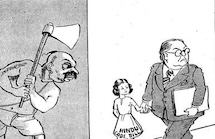
Popularly, we think that political cartoons question the powerful but what if this was not the case? What if political cartoons, replicated structures of the socially dominant? Read how in our new excerpt on political cartoons featuring Dr. Ambedkar.
Unnamati Syama Sundar
__

On Martyrs' day 2024, read the poet Sarojini Naidu's tribute to Gandhi given over All India Radio two days after his assassination.
Sarojini Naidu
__

On Republic Day, the Indian History Collective presents you, twenty-two illustrations from the first illustrated manuscript (1954) of our Constitution.
Indian History Collective
__
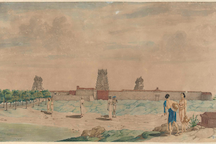
One of the key petitioners in the Ayodhya title dispute was Bhagwan Sri Ram Virajman. This petitioner was no mortal, but God Ram himself. How did Ram find his way from heaven to the Supreme Court of India to plead his case? Read further to find out.
Richard H Davis
__
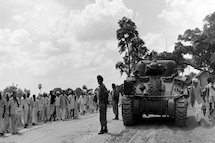
Labelled "one of the shortest, happiest wars ever seen", the integration of the princely state of Hyderabad in 1948 was anything but that. Read about the truth behind the creation of an Indian Union, the fault lines left behind, and what they signify
Afsar Mohammad
__

How did Bengal get a large Muslim population? Was it conversion by ruling elites was there something deeper at play? Read Dr. Eaton's classic essay to find out.
Richard Eaton
__
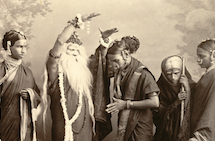
An excerpt from Shailaija Paik's new book 'Vulgarity of Caste' that documents the pivotal role Tamasha (the popular art form) has played in reinforcing and producing caste dynamics in Marathi society.
Shailaja Paik
__
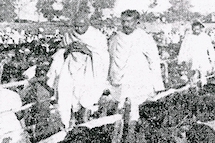
In 1942, two sub-districts in Bengal declared independence and set up a parallel government. The second part of our story brings you archival papers in the form of letters, newspaper reports, and judicial records documenting this remarkable movement.
Indian History Collective
__
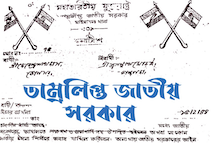
In 1942, five years before India was independent, two sub-divisions in Bengal not only declared their independence— they also instituted a parallel government. The first in a new series.
Indian History Collective
__
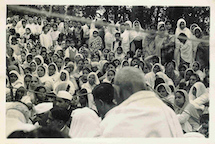
In his own words, read Mohandas Karamchand Gandhi's views on the proselytising efforts taken on by the organisations such as Arya Samaj, Tabhligi Jamaat, and the Church Missionary Society of England.
Mohandas Karamchand Gandhi
__

